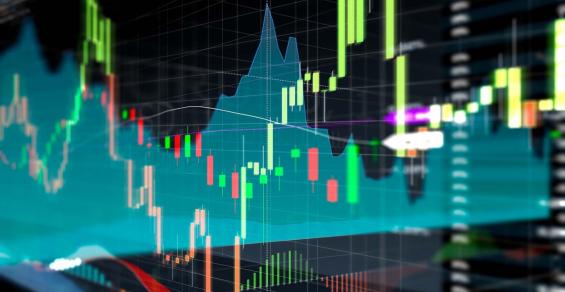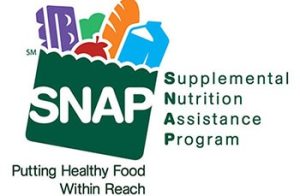Morning report: Plus – more European fertilizer production cutbacks announced amid energy crises. (Comments are updated by 7:30 a.m. Central Time.)
Corn up 5-7 cents
Soybeans mixed; Soymeal down $3.70/ton; Soyoil up $0.13/lb
Chicago wheat down 4-5 cents; Kansas City wheat down 1-2 cents; Minneapolis wheat up 2-4 cents
*Prices as of 6:50am CDT.
Feedback from the Field updates! How does your farm’s crop conditions stack up against other farms around the country? Click this link to take the survey and share updates about your farm’s crop development. I review and upload results daily to the FFTF Google MyMap, so farmers can see others’ responses from across the country – or even across the county!
My latest FFTF update column was published to our site a couple days ago. Farmer sentiments about yields in 2022 remain mixed across the country and drought pressure continues to linger high on everyone’s minds. Check out the article (here!) for the latest insights.
Inputs
Yesterday’s newsletter featured several highlights about how the European natural gas crisis is slowing fertilizer production in the region and how it could potentially impact U.S. farmers in the coming weeks.
USDA’s Illinois Department of Ag Market News Service releases its bi-weekly retail production costs report today that will provide further insights about if the effects of the E.U.’s energy crisis have already trickled down to the U.S. farmgate.
Retail prices for nitrogen, phosphate, potash, and diesel products in Illinois have trended lower this summer, though the recent news from the E.U. suggests that trend may soon be ending. Today’s reports should provide an early indication of what seems like an inevitable upward climb (again) for nitrogen prices.
Overnight, Norwegian fertilizer behemoth Yara announced additional cuts to its ammonia production targets across its European plants as natural gas costs continue to soar. The company had already projected production scale backs in late July.
But the latest round of reductions will shrink Yara’s production capacity at its European plants to only 35% of its full capabilities.
The natural gas-fertilizer production dynamic is a very important one to watch in the coming months for a couple key reasons. First, natural gas is a critical ingredient for anhydrous ammonia synthetization. Second, this production process is energy intensive, so it requires a great deal of natural gas to fuel operations.
Sidebar: natural gas is a primary energy source for most large manufacturing facilities around the world. Remember how the February 2021 cold snap in the Gulf shut down soybean crush and ethanol production facilities all the way up in the Midwest? That was because of strained natural gas inventories at the Gulf. The food manufacturing plant I used to work at installed giant natural gas-powered turbines to generate electricity so it could save on its total natural gas consumptions and expenditures for energy.
Natty gas is a big deal, y’all, and I can’t stress it enough. But back to the main point.
Yara plans to rely on plants and partners outside of the European Union to source its nitrogen products and hinted at importing ammonia if necessary. “With this, Yara will have curtailed an annual capacity equivalent of 3.1 million tonnes ammonia and 4.0 million tonnes finished products,” the company said in a statement.
German fertilizer producer BASF made production cuts in July and could issue additional ones as prices begin to rise. Other global fertilizer producers, including Germany’s SKW Piesteritz, China’s Sinofert, the U.S.’s CF Industries’ CF Fertilisers UK plant, and Poland’s Grupa Azoty, have announced scaled-back production targets – or even temporary production stoppages – due to energy constraints in recent days.
“The current cost of natural gas at National Balancing Point (NBP) is more than twice as high as it was one year ago, with the NBP forward strip suggesting that this price will continue to rise in the months ahead,” CF Industries said in a statement yesterday.
What does that mean for farmers in the U.S.? If Yara remains committed to meeting its customers’ orders, the company will likely pull ammonia stocks from global trade flows, sending nitrogen prices higher and increasing scarcity of the product ahead of fall application season.
“Nitrogen supply availability will continue to worsen in Europe on elevated gas prices…We do not expect ammonia to price off EU gas. As prices are pulled higher by the EU (and Asia), demand destruction will accelerate,” analysts at Scotiabank said in a research note, as reported by Reuters.
The third quarter is not typically a time for excessive fertilizer sales across the globe. But the production cutbacks will narrow the window for fertilizer producers to restock inventories ahead of the spring application season in the Northern Hemisphere. So, if you can find a screaming deal on nitrogen in the coming weeks, pounce on that. It may be your last chance to see low moderated nitrogen prices until after next spring.
My latest E-Corn-Omics column dives into the dynamics currently at play in the fertilizer and energy markets. It also features farmer insights about 2023 fertilizer purchases and applications from our August 2022 Farm Futures survey. Enjoy!
Corn
Corn prices rose $0.05-$0.07/bushel overnight, flirting with a two-month high as markets digested lackluster crop conditions in Iowa and Illinois (the top two U.S. corn and soybean-producing states) amid ongoing crop tours. Rallying energy futures also provided price support for the corn complex this morning.
Yesterday’s crop tours found lower than expected yield estimates from Western Iowa. The tour will release its estimates for Iowa’s yields today, which should generate more market movement as the lackluster crop conditions are assessed. Crop conditions in Illinois were also slightly poorer than expected relative to last year’s estimates, though the scouts’ yield projection for Illinois of 190.71 bpa was still higher than the three-year average.
Earlier sections of the tour saw lower corn and soybean yields in both Nebraska and Indiana, where yield prospects are both likely below three-year averages, according to tour scouts.
Weekly ethanol output readings from the U.S. Energy Information Administration (EIA) released yesterday saw weekly ethanol production bounce back from last week’s 15-week low. Through the week ending August 19, the daily average ethanol output rose 0.4% from the previous week to 987,000 barrels/day.
Blending volumes shied away from last week’s one-year high, falling 1% on the week to 919,000 barrels/day as consumer demand for gasoline crashed into a seasonal slowdown. Through last Friday, weekly gasoline demand fell a staggering 10% from last week’s six-week high to 8.43 million barrels/day as summer travel activities slowed and schools returned into session.
Consumer gasoline demand has shown responsiveness to higher gasoline prices over the course of the summer and seasonal travel slowdowns are likely to reroute travelers closer to home in the coming weeks. But steady ethanol blending rates reported by the EAI this week suggest that there is still life left for ethanol demand, which means corn growers will enjoy healthy competition between livestock and ethanol buyers as harvest approaches.
Soybeans
Despite higher energy prices and observed yield shortfalls in the U.S. over the past couple days, demand concerns about China amidst slowing economic data reports and the expectation for a behemoth Brazilian crop to be planted this fall kept soybeans wavering between two cents worth of gains and losses this morning. Losses are likely capped by China’s ongoing heatwave, which could increase its demand for grain and oilseed imports in the coming months.
High energy costs could provide some economic opportunities for the global biofuels sector. Yesterday in Argentina, the government announced it would keep higher biodiesel blending rates in place to avoid increasing energy import volumes.
Argentina is heavily reliant on international suppliers for its energy needs. And as global energy costs soar, the country loses revenues each time it is forced to import oil or natural gas from abroad.
But the world’s third largest soybean oil producer can turn inwards to produce biodiesel and save the country money on energy imports. Argentina’s biodiesel blend rate had previously been issued at 5%. But in June, the government raised it to 12.5% as energy costs soared. And it appears that it will stay that way for the indeterminate future.
“We are convinced that we must bet on biofuels, which allow us to save foreign exchange (reserves). That is why we have decided… to extend the cut,” said Energy Minister Flavia Royon on Twitter, as reported by Reuters.
Wheat
Despite rumors of a previous purchase, Egypt is believed to have backed out of a purchase that was reported by traders circles yesterday. Egypt’s state wheat-buying body, the General Authority for Supply Commodities (GASC), reportedly found prices to be too high for its liking, which contributed to the overnight wobbling of wheat futures prices in the U.S. even though the dollar edged 0.26% lower during that time.
India issued an export ban on wheat flour exports overnight in an effort to stabilize domestic wheat and flour prices. The country had already banned wheat exports in mid-May after five years of bumper crops and the sudden shut down of Black Sea wheat exports this spring led global suppliers to turn to India for available and affordable wheat supplies.
But a drought this spring slashed production forecasts and the export boom left domestic wheat supplies at tight levels. India’s wheat flower exports surged 200% higher between April – July 2022 relative to a year ago due to the Black Sea conflict but it also sent domestic wheat prices out of reach for average Indian consumers.
“There was a policy not to prohibit or put any restrictions on the export of wheat flour. Therefore, a partial modification of the policy was required….to ensure food security and put a check on mounting prices,” the Indian government said in a statement.
Weather
Cooler temperatures will return to the Upper Midwest today, according to NOAA’s short-range forecasts. The Central Plains will see temperatures rise into the 90s-100s today while the Mississippi River Valley and the area east of it is more likely to experience temperatures in the 80s-90s.
Thundershowers are likely this afternoon for the Lake Michigan basin, though the rains could also stretch across the I-88/1-80 corridor into Iowa. Accumulation is forecast to be light – not topping more than a half inch.
The 6-10-day NOAA outlook forecasts (what I hope to be) the last heat wave of the summer for the Northern Plains and Upper Midwest through the first week of September. Chances for showers for the Central and Southern Plains and Southeast are above average during that time, which bodes favorably for winter wheat seeding.
Above average heat will continue to persist Corn Belt in the 8-14 day NOAA outlook. Dry conditions will likely continue in the Upper Midwest and Eastern Corn Belt during that time, though the Southern Plains could have a good chance at showers.
Financials
S&P 500 futures rose 0.61% to $4,168.25 at last glance this morning on some bargain buying after a tumultuous trading week saw stocks selloff on concerns about economic slowdowns in China and continued aggressive rate hikes from the U.S. Federal Reserve to combat inflation.
“I’m very skeptical of whether this better tone, and this softer dollar, can hold after the Fed speech,” Jane Foley, senior foreign-exchange strategist at Rabobank, told the Wall Street Journal this morning. “Even if it’s not quite as hawkish as the uber-hawks are expecting, it’s still going to be quite hawkish.”
What else I’m reading this morning on our website, FarmFutures.com:
The latest farmer insights from around the country in our Feedback from the Field series.
Virginia Tech’s Dave Kohl warns farmers to watch out for economic signals pointing to a recession.
Bryce Knorr announces the results from the annual Farm Futures study evaluating grain storage strategies.
Secretary of Agriculture Tom Vilsack announced $100 million in USDA funds to expand biofuel infrastructure at retail stations across the country.
Morning Ag Commodity Prices – 8/25/2022
Contract
Units
High
Low
Last
Net Change
% Change
SEP ’22 CORN
$ / BSH
6.7425
6.645
6.7325
0.075
1.13%
DEC ’22 CORN
$ / BSH
6.665
6.5675
6.6525
0.08
1.22%
MAR ’23 CORN
$ / BSH
6.7125
6.62
6.6975
0.07
1.06%
MAY ’23 CORN
$ / BSH
6.7125
6.62
6.71
0.08
1.21%
JUL ’23 CORN
$ / BSH
6.675
6.5775
6.6675
0.0825
1.25%
SEP ’23 CORN
$ / BSH
6.2575
6.1975
6.2575
0.0625
1.01%
DEC ’23 CORN
$ / BSH
6.175
6.095
6.165
0.065
1.07%
AR2 ’24 CORN
$ / BSH
6.235
6.17
6.235
0.0625
1.01%
MAY ’24 CORN
$ / BSH
6.2725
#N/A
6.2025
0
0.00%
SEP ’22 SOYBEANS
$ / BSH
15.7575
15.5675
15.6825
0.075
0.48%
NOV ’22 SOYBEANS
$ / BSH
14.67
14.4875
14.5725
0.0025
0.02%
JAN ’23 SOYBEANS
$ / BSH
14.7125
14.5375
14.6225
0.005
0.03%
MAR ’23 SOYBEANS
$ / BSH
14.7
14.5375
14.6325
0.0175
0.12%
MAY ’23 SOYBEANS
$ / BSH
14.705
14.5325
14.63
0.015
0.10%
JUL ’23 SOYBEANS
$ / BSH
14.675
14.5075
14.6025
0.02
0.14%
AUG ’23 SOYBEANS
$ / BSH
14.465
14.3275
14.385
-0.01
-0.07%
SEP ’23 SOYBEANS
$ / BSH
13.935
13.935
13.935
-0.0175
-0.13%
NOV ’23 SOYBEANS
$ / BSH
13.8125
13.6925
13.76
-0.02
-0.15%
AN2 ’24 SOYBEANS
$ / BSH
0
#N/A
13.81
0
0.00%
AR2 ’24 SOYBEANS
$ / BSH
0
#N/A
13.7325
0
0.00%
SEP ’22 SOYBEAN OIL
$ / LB
69.57
68.51
68.9
0.13
0.19%
OCT ’22 SOYBEAN OIL
$ / LB
67.65
66.58
66.96
0.16
0.24%
SEP ’22 SOY MEAL
$ / TON
469.2
464.3
464.7
-3
-0.64%
OCT ’22 SOY MEAL
$ / TON
434
429
429.5
-3.3
-0.76%
DEC ’22 SOY MEAL
$ / TON
430.3
425.1
425.5
-3.8
-0.89%
JAN ’23 SOY MEAL
$ / TON
425.5
420.9
422
-2.9
-0.68%
MAR ’23 SOY MEAL
$ / TON
416.8
412.4
413.3
-2.4
-0.58%
SEP ’22 Chicago SRW
$ / BSH
8.035
7.86
7.88
-0.07
-0.88%
DEC ’22 Chicago SRW
$ / BSH
8.215
8.045
8.065
-0.0675
-0.83%
MAR ’23 Chicago SRW
$ / BSH
8.36
8.2025
8.2275
-0.0575
-0.69%
MAY ’23 Chicago SRW
$ / BSH
8.4475
8.29
8.3075
-0.065
-0.78%
JUL ’23 Chicago SRW
$ / BSH
8.45
8.3
8.335
-0.045
-0.54%
SEP ’23 Chicago SRW
$ / BSH
8.4975
8.355
8.375
-0.055
-0.65%
DEC ’23 Chicago SRW
$ / BSH
8.57
8.435
8.435
-0.065
-0.76%
SEP ’22 Kansas City HRW
$ / BSH
9.0725
8.9175
8.94
-0.0225
-0.25%
DEC ’22 Kansas City HRW
$ / BSH
9.05
8.8825
8.9125
-0.02
-0.22%
MAR ’23 Kansas City HRW
$ / BSH
9.005
8.8425
8.8725
-0.035
-0.39%
MAY ’23 Kansas City HRW
$ / BSH
8.9675
8.82
8.82
-0.065
-0.73%
JUL ’23 Kansas City HRW
$ / BSH
8.8325
8.715
8.745
-0.0275
-0.31%
SEP ’23 Kansas City HRW
$ / BSH
8.6925
8.685
8.6925
-0.045
-0.52%
DEC ’23 Kansas City HRW
$ / BSH
8.835
#N/A
8.79
0
0.00%
SEP ’22 MLPS Spring Wheat
$ / BSH
9.155
9.0375
9.11
0.0325
0.36%
DEC ’22 MLPS Spring Wheat
$ / BSH
9.2925
9.155
9.245
0.045
0.49%
MAR ’23 MLPS Spring Wheat
$ / BSH
9.4
9.2825
9.355
0.035
0.38%
MAY ’23 MLPS Spring Wheat
$ / BSH
9.4725
9.36
9.4725
0.0725
0.77%
JUL ’23 MLPS Spring Wheat
$ / BSH
9.4725
#N/A
9.4075
0
0.00%
SEP ’23 MLPS Spring Wheat
$ / BSH
9.2
9.19
9.2
0.03
0.33%
DEC ’23 MLPS Spring Wheat
$ / BSH
9.02
#N/A
9.2
0
0.00%
SEP ’21 ICE Dollar Index
$
108.635
107.945
108.26
-0.356
-0.33%
OC ’21 Light Crude
$ / BBL
95.76
94.44
95.29
0.4
0.42%
NO ’21 Light Crude
$ / BBL
95.3
94.01
94.81
0.41
0.43%
SEP ’22 ULS Diesel
$ /U GAL
4.0754
4.0244
4.0737
0.0605
1.51%
OCT ’22 ULS Diesel
$ /U GAL
4.0356
3.972
4.0152
0.0503
1.27%
SEP ’22 Gasoline
$ /U GAL
2.8522
2.7703
2.793
-0.0077
-0.27%
OCT ’22 Gasoline
$ /U GAL
2.6924
2.6193
2.6429
-0.0041
-0.15%
AUG ’22 Feeder Cattle
$ / CWT
0
#N/A
181.225
0
0.00%
SEP ’22 Feeder Cattle
$ / CWT
0
#N/A
183.025
0
0.00%
AU ’21 Live Cattle
$ / CWT
0
#N/A
141.325
0
0.00%
CT2 ’21 Live Cattle
$ / CWT
0
#N/A
143.775
0
0.00%
OCT ’22 Live Hogs
$ / CWT
0
#N/A
90.375
0
0.00%
DEC ’22 Live Hogs
$ / CWT
0
#N/A
82.175
0
0.00%
AUG ’22 Class III Milk
$ / CWT
20.11
20.11
20.11
0.05
0.25%
SEP ’22 Class III Milk
$ / CWT
20.06
19.93
20.06
0.07
0.35%
OCT ’22 Class III Milk
$ / CWT
20.36
20.32
20.36
0.01
0.05%
Get our top content delivered right to your inbox. Subscribe to our morning and afternoon newsletters!






